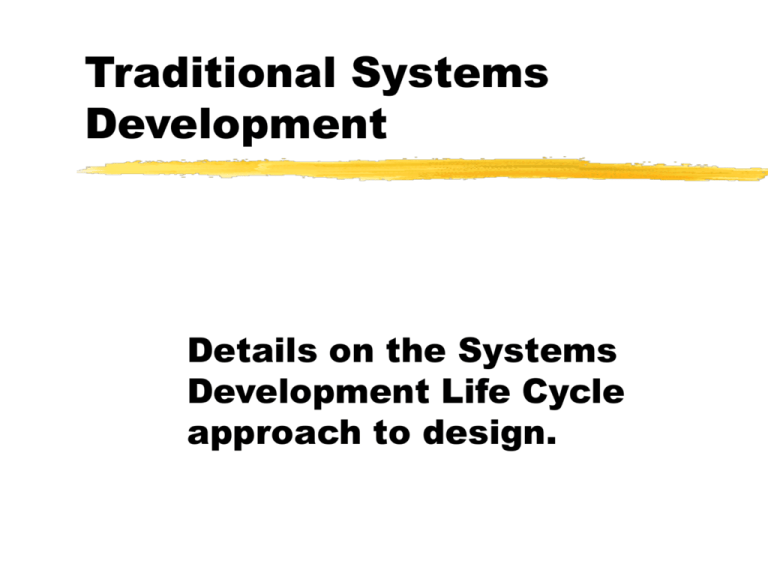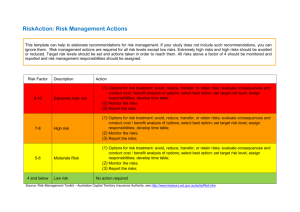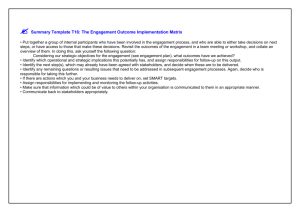Systems Development Life Cycle 01/26/00
advertisement

Traditional Systems Development Details on the Systems Development Life Cycle approach to design. Planning Business •Priority •Feasibility Analysis Technical Design Implementation Operations Maintenance SDLC: Project Management Manage development schedule and cost Make average contributors more effective Prevent genius members from creating a system that cannot be maintained Initial Investigation What is the system supposed to do and what priority should we give it? On IS budget Memo or oral Define user’s general expectations Business justification Rough cost Assign priority How do we find problems? Dictated by business projects Competitive initiative Surveillance Reaction Opportunistic Frameworks Competitive strategy Value Chain Initial Investigation State the business problem. Summarize the proposed IT solution. Show how the proposed solution contributes to the fundamental business goals. Strategic model Estimate net benefits. Response Strategies Low Cost Provider Differentiation Excellence Customer Service Niche Market Feasibility Study How Should we do it? Feasibility Study Formal report On user budget What should we do? How should we do it? What should it cost? How will we use it? Feasibility: TELOS Technical: how can we do it? Economic: is it cost justifiable? Legal: are there legal issues? Operational: does this fit the way we want to do business? Schedule: can we get it done on time? Format: Include these sections Title page Table of contents Executive summary Problem statement Analysis of alternatives Cost and benefits Recommendation Request for authorization Appendix Business Decomposition What are the business components of the system? Babysitter Service The AITP Service Club wants to run a babysitting service. Customers call to request a sitter and the Club Coordinator assigns an employee to sit for the customer from a list of employees available for the particular day requested. Functional Decomposition Determine Employee Availability Assign Employees to Job Accept Call Record Customer Record Job Assign Employee Confirm Assignment Data Decomposition Employees Customers Jobs Function/Data Interaction Matrix Employee Customer Job Determine Employee Availability Schedule Jobs Accept Call Record Customer Record Job Assign Employee Confirm Assignment Location Reach: Where should it be available Range: What functions should it support Response: How quickly must it respond General Analysis Specify logical system requirements TOP DOWN DATA ANALYSIS – Computer systems are extremely complicated and cannot be developed without careful planning. The first step is generally to build a model of the information system based on the general objectives and goals it must meet. This is called top down modeling. E-R Diagram Employee Customer Job Data-Flow Model • A logical representation of the processes and data transformation of a system or organization in graphical form Context Diagram Customer Request Confirirmation Babysitter Information System Availability Assignment Employee Level 1 DFD Request Assignment Confirirm- 1. ation Assign Employee New Current D1 | Customer Availability Avail Times Job Assign 2. Offer Availability Avail Times D2 | Employee D3 | Jobs Communications Model • A representation of the location at which data is stored and processed and the communications links that connect them. General Systems Analysis Understand the current system Be sure you don’t omit essential features Obtain detailed specifications of expected functions Operations level requirements Provide specifications for IT developers to design from General Analysis Is this an information system or a reengineering project? Reengineering requires a mandate to change the way you do business, and requires a major commitment from all participants. Most information systems are written to support existing processes. Detailed Conceptual and Physical Design Computer system structure and module specification System Implementation Build it Development Structured Code CASE tools Code generators Rapid Application Development Object Oriented development Prototypes Testing Walkthroughs and code inspection Application test Unit test - each program System test - whole system together Processes and user acceptance Installation Conversion Direct Phased Pilot Parallel Training Operations acceptance Maintenance Everything after acceptance






